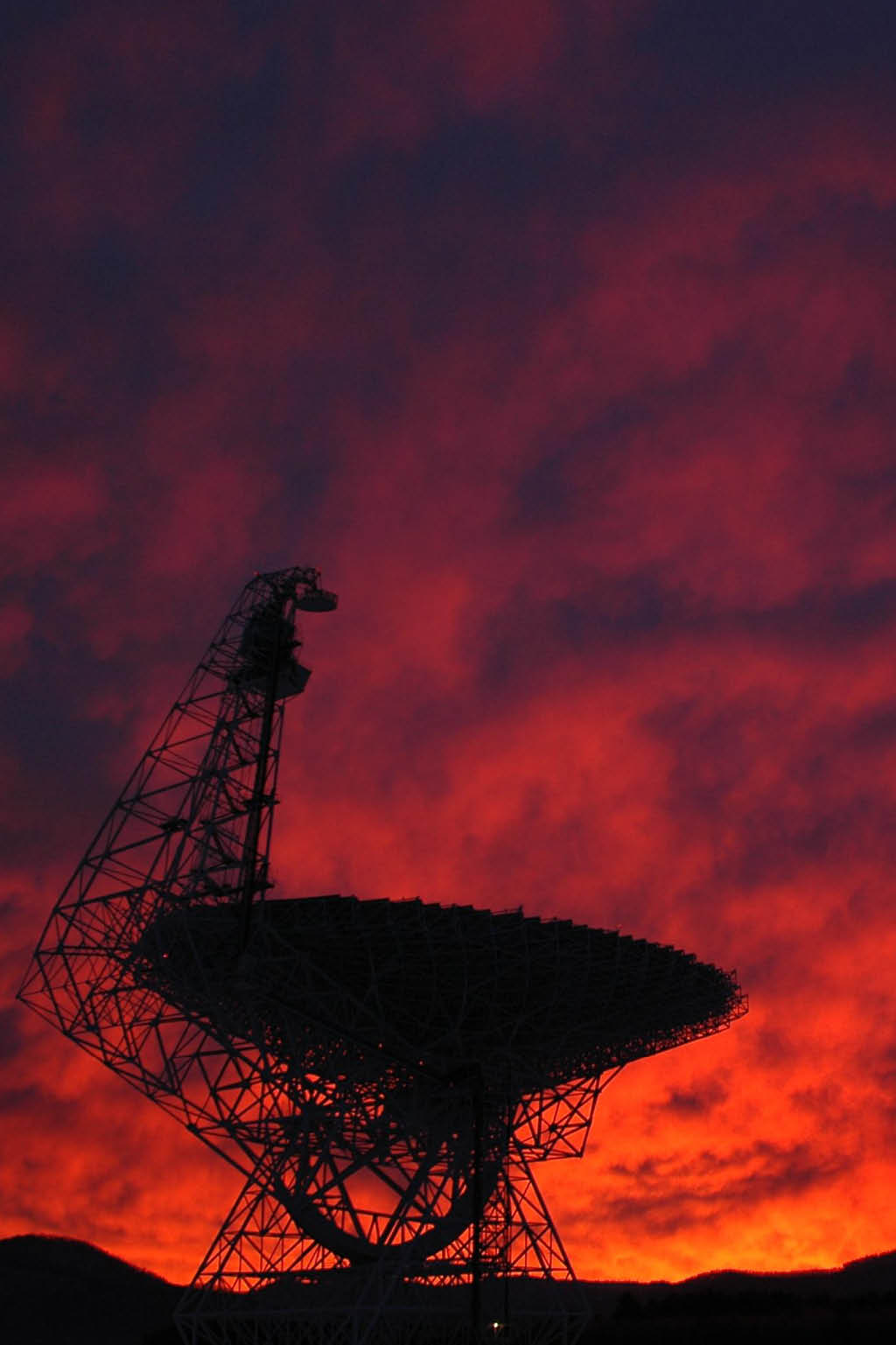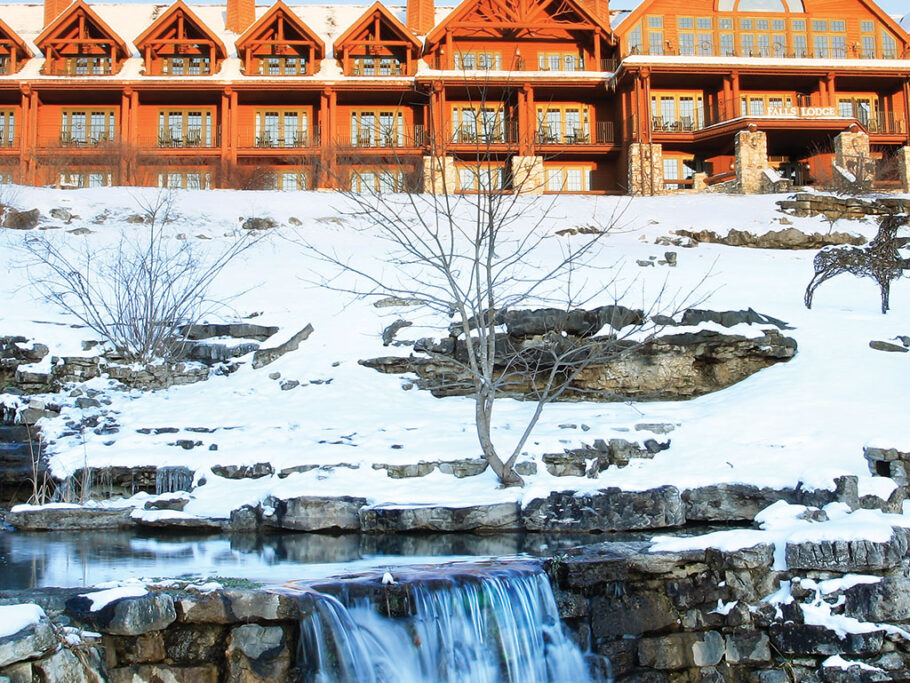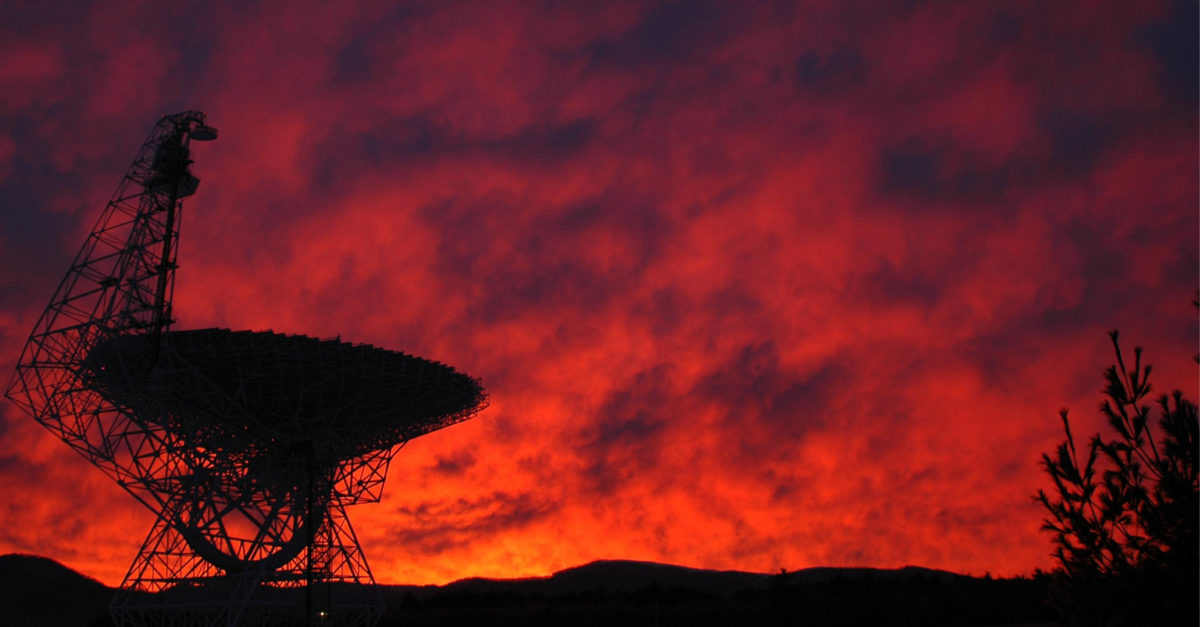A Green Bank Guide to the Galaxy
Hidden deep in the rolling mountains of Appalachia, a peaceful giant keeps watch over the universe. Green Bank, West Virginia (population: 143), located in Pocahontas County, is home to the Green Bank Telescope (GBT)—the largest fully steerable telescope in the world.
Shooting For the Stars
This particular part of the country was chosen for space exploration because of its location. Set high in the Allegheny Mountains about a half hour from Virginia and home to clear, dark skies, it is an ideal place to search for life in the cosmos. The National Radio Astronomy Observatory (NRAO) was founded here in 1956, and its first transmissions (made by antenna) were made two years later. Through the years, the telescopes built here grew in size and scope. In 1958, the first of three eighty-five foot versions made its debut; by 1962, a three-hundred-foot telescope was operational.
But NRAO’s crowning achievement was the construction of the Green Bank Telescope, also known as the Robert C. Byrd Green Bank Telescope. The ten-year project, which cost $95 million, required hundreds of skilled workers representing trades from concrete work to earth moving to steel construction to logistics to carpentry. A specialized derrick crane was also erected on-site over a six-month period to allow the construction of the main part of the telescope to begin. Construction was completed in the year 2000.
How large is the telescope? Its surface spans 2.3 acres (more area than two football fields), and, at 485 feet tall, it’s taller than the Statue of Liberty and just a shade shorter than the Eiffel Tower and the Washington Monument; incredibly, it also weighs in at just under seventeen million pounds.
This massive instrument has been, and continues to be, a key tool in the history of space exploration. Its ability to collect information at very small wavelengths (as small as three millimeters) has made it one of the most sensitive radio telescopes in the world—which has opened the door to countless groundbreaking discoveries. For example, in the 1970s, the observatory first detected Sagittarius A*, the black hole in the center of the Milky Way. In the twenty-first century, the GBT has twice been used to observe the universe’s most massive neutron stars—super-dense stars about the size of a city. The most recent time was in September 2019, when the telescope was used to discover the most massive neutron star ever, which the Green Bank Observatory says is so dense, it is “teetering on the edge of existence,” as the power of its gravity threatens its self-collapse.
To achieve all this, though, the telescope’s Achilles’ heel—radio waves—first needed to be vanquished.
A Quiet Place
The Green Bank Telescope can pick up signals as tiny as a billionth of a billionth of a millionth of a watt—from thirteen billion light years away. (Go ahead: take a minute to wrap your head around that.) It stands to reason, then, that it can also pick up any radio waves in its own backyard.
As a result, for the past sixty years, the town of Green Bank has existed under what many would consider untenable restrictions in the twenty-first century, with no radio, cell phone, or television towers—any of which can cause interference while monitoring intergalactic waves. For residents, that means no cell phone signal, no cordless phones, no Bluetooth, no Wi-Fi, and no microwaves—nothing wireless is allowed within a ten-mile radius of the telescope. But this doesn’t mean that residents are completely unplugged from technology —they just find innovative solutions to stay connected.
This is because Green Bank falls within the National Radio Quiet Zone, a 13,000-square-mile radius established in 1958 by the FCC to keep radio frequencies from interfering with telescopes like those in Green Bank. It’s serious business: trucks patrol the town to monitor if anyone isn’t complying with the radio wave rules, which residents have to agree to in writing. The observatory staff uses only diesel vehicles near the telescopes to avoid spark plugs. It’s a place like no other for locals—and for astronomers across the globe.
An Intergalactic Hotspot
Today, both professional and amateur scientists flock to Green Bank Observatory, which was created in 2016 to take over operations of the facilities and its eight telescopes from the NRAO. Over six hundred people, both professionals and students, request to use the Green Bank Telescope each year, yet only about a quarter of the proposals are accepted.
But there’s so much more to experience. At the 25,000-square-foot Green Bank Science Center, which is free to visit, you can take a self-guided walking tour of the grounds and a scale model of the universe. You can also take one of several paid guided tours, including a guided site tour that takes you on a bus through the grounds right to the base of the GBT, as well as special behind-the-scenes guided tours for SETI (Search for Extraterrestrial Intelligence), high-tech tours, and history tours.
Scientists, visitors, and students trek here all year long, but the busiest time of year is during the summer. In addition to offering camps and workshops for students and adults, the observatory has special events like the Space Race Rumpus bike festival and StarQuest, the largest multiday star-viewing event in the region. Most popular, though, is Astronomer for a Day, an overnight program for student groups that teaches them how to use a real radio telescope.
On the surface, Green Bank, West Virginia, may seem like the unlikeliest mecca for cutting-edge space discoveries. With its thirty-five-to-one ratio of visitors to residents and retro vibe, it feels like a place adrift from time. But perhaps that’s actually why it’s the perfect place for what the Green Bank Telescope teaches us—there’s so much to learn; we just have to listen.
For more info, visit greenbankobservatory.org























